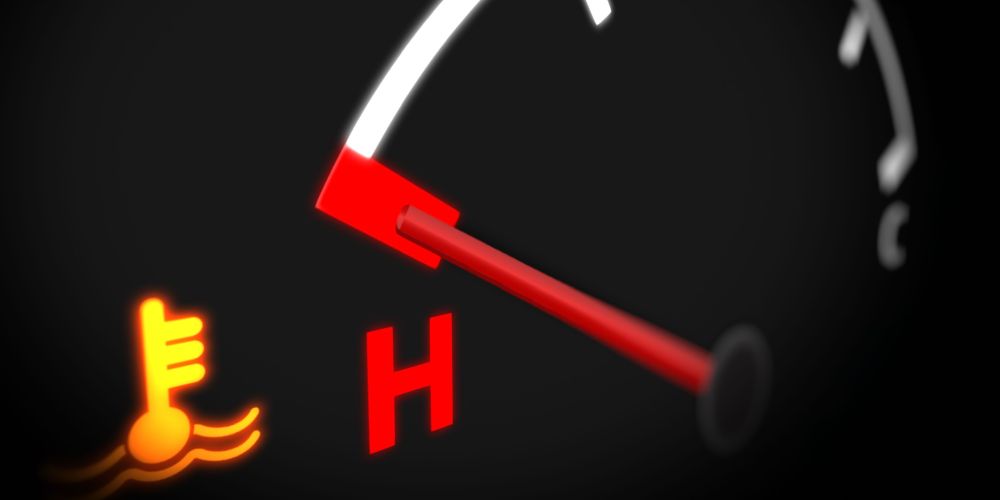If you are driving down the road and notice that your temperature gauge is showing that it is hotter than usual, pull over as soon as it is safe. Operating a vehicle while it is overheating is unsafe and could cause a catastrophic failure for your vehicle. Knowing the warning signs of overheating and understanding what to do when it occurs could save your vehicle’s engine and yourself a lot of money in the future. A cracked engine block and cylinders can make your engine seize, which can be a very costly engine repair. You may need cooling system repair, but it is essential to watch for signs and respond to them immediately.
What to look out for
The warning light on the dashboard is the first sign to look out for. Knowing what warning indicators mean and they pop up will keep you informed; refer to your owner manual about what the symbol looks like in your vehicle! This symbol will showcase when your temperature gauge is nearing its maximum, which indicates that your engine is too hot! Another sign that your engine is overheating is steam coming from your vehicle’s hood, or your hood is hot to the touch. This also indicates that your engine is too hot! Another indicator is a strange, sweet smell that originates from the engine. This could be the scent of leaking radiator fluid, be on the lookout for a pool of coolant on the ground under your vehicle as well! If you notice any of these signs, then you may need cooling system repair!
What to do when your engine is overheating
If you notice that your vehicle is overheating, here are some things you can do to help cool off your engine.
- Pull over as soon as it is safe; driving with an overheating engine could cause significant damage.
- Turn off the air conditioner and turn up the heat; this helps divert the heat away from the engine.
- Call our automotive repair shop, as this is a severe problem, and you need to get your vehicle fixed asap.
- Wait at least 15 minutes for your vehicle to return to a normal engine temperature.
- When you notice the temperature gauge increase, you’ll need to let it cool off again before driving it to our automotive repair shop.
- If the engine is completely cooled, you can add additional coolant; check your owner’s manual for more information on adding coolant to your vehicle.
What should you do next?
Do not let this issue stay around and linger. This type of problem is not something that will go away on its own; you will need to have your cooling system repaired by a reputable automotive repair shop. This issue is of great importance that a team of expert technicians resolves it. To prevent this type of issue from happening in the first place, we recommend regularly scheduled coolant flushes and radiator maintenance. Routine inspections and preventive maintenance on your vehicle will drastically reduce the chances of something like this from occurring in the first place and can help fix potential problems before they become more severe.

